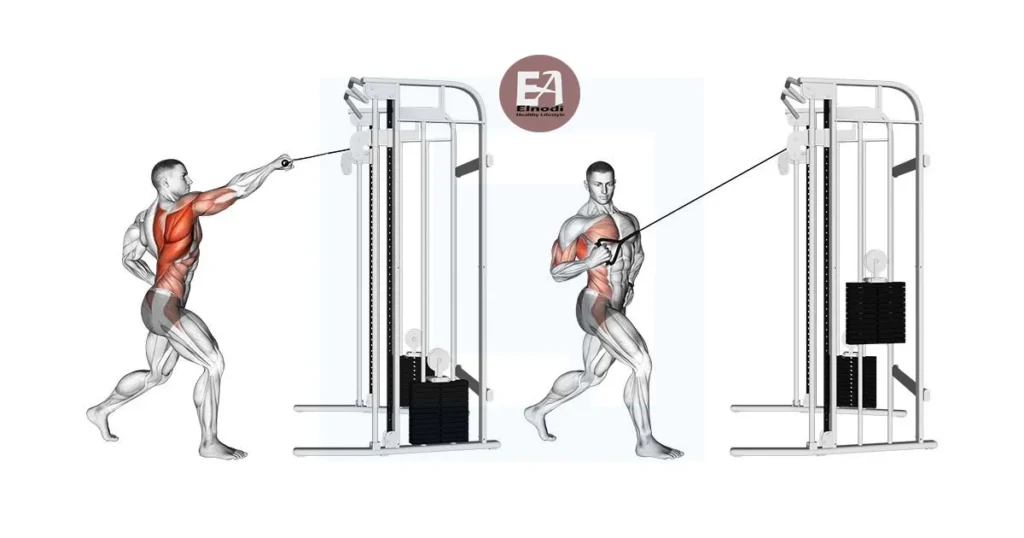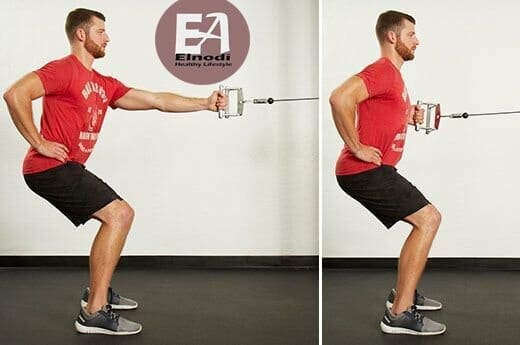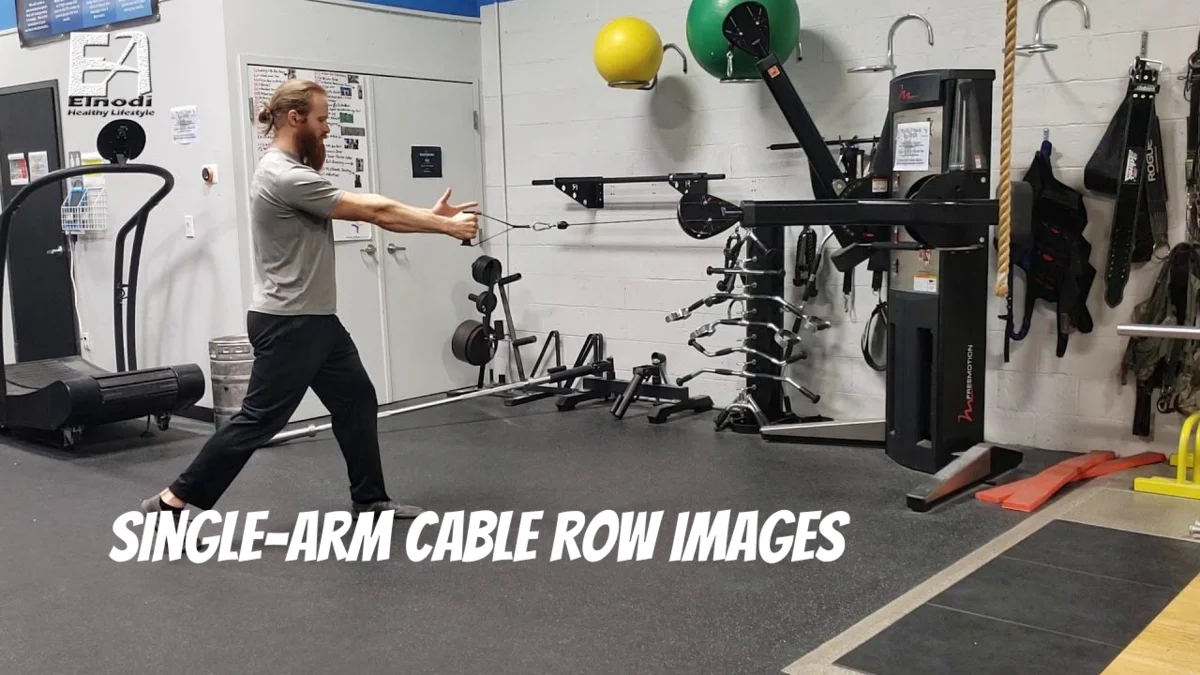The Single-arm cable row is an intense resistance workout that targets your entire body. This tough exercise is perfect for anyone looking to add a difficult gym routine to their list of workouts.
It is also a great way to start your morning. Because it isn’t a more traditional resistance workout, you can do this workout with beginner-level weights and still have a challenging workout. Plus, the Single-Arm Cable Row can be done at home with just one set of weights and no equipment. All you need is a rowing machine and some cables. (1)
If you are looking for an intense gym routine that can be done easily at home, the Single Arm Cable Row may be the perfect choice for you.
What is Single-Arm Cable Row?
The single-arm cable row is one of the best exercises for exercising the back muscles, including the lats, rhomboids, and trapezius.
It is done with a cable machine and a handle attachment. It entails using one arm to pull the rope towards your body.
This exercise can help to improve posture, increase back strength, and promote overall upper-body muscle development.
Benefits
- Creating a Sharper Back
- Muscular Imbalance Correction
- improving Back Strength
- Proprioception and Stability Improvement
Muscle Worked

One arm cable rows target the following muscles during workouts:
- Primarily Muscles Target: Latissimus Dorsi, Rhomboids, Trapezius.
- Secondary Muscles Target: Back Deltoid, Infraspinatus, Biceps Brachii, Brachialis, Brachioradialis, Core, Obliques, Quadratus Lumborum Teres Major, Teres Minor, Psoas Major, Gluteus, and Teres Minor
How to do

Instructions
- Attach a single handle to the low pulley cable machine and decide how much weight to utilize.
- Sit with your back to the cable and your knees slightly bent.
- Grab the handle with your right hand in an overhand hold and lift the weight off the stack.
- Maintain a straight back and shoulders. Slowly drag the weight to your side while twisting your wrist.
- At the apex of the movement, squeeze your shoulder blade and pull the weight as far as you can.
- Pause, then gradually lower the weight back to the starting position (do not allow the weight to contact the stack).
- Repeat for the appropriate number of reps, then switch arms.
Tips
- Throughout the exercise, keep your shoulder stationary. Do not bring your arm forward with your shoulder.
- If you have a weak side (most people’s weak side is left), make sure you do that side first to address any imbalances.
Common Mistakes
- Going Too Far
- Moving Too Quickly
- Excessive Use of Arm
- Excessive Use of Body
Variations
Seated Single-Arm Cable Row
Try this variation if you’re just getting started. Most commercial gyms will have basic seated cable row equipment available for your use. The main difference here is that you will only train one arm at a time.
Place your other arm wherever is comfortable for stability. You may like resting it on the seat or holding another cable isometrically if it is a dual pulley system. You can even perform alternating reps if you choose the latter option.
Standing High Cable Row
The standing high cable row is similar to the lunge version in setup, except that the cable equipment is put above your head and you are standing. To improve your balance, take a staggered posture.
The same side leg should be behind you once more. The high row alters the angle of the exercise, making it more similar to a lat pulldown. This transfers the emphasis to your lats and recruits more upper back activation.
Alternatives
Two-Handed Cable Row
The two-handed cable row is very similar to the single-arm cable row, except that you use both hands at the same time (you got it). If you are new, start with this one because it is a lot easier and more natural to perform.
Even if you’re an experienced rower, the two-handed cable row allows you to use other attachments, such as a straight bar, for a wider grip that you wouldn’t be able to use with a single-arm cable row.
Machine Row
With all the (justifiable) buzz surrounding free weights, you may believe that using equipment is unnecessary. A machine row, on the other hand, is an excellent substitute for the single-arm cable row.
Every machine is a bit different, but in general, you’ll be able to accomplish a wide range of rows whether you use one or both hands. You don’t have to worry about stabilizing the weight because the machine will lock in the path of your movement for you.
Dumbbell Row

Although the dumbbell row does not have as much built-in variation as the other options, it is an excellent back-building exercise. Grab a dumbbell, master your hinge, and start rowing.
This maneuver can also be supported by a bench. For added support, rest your opposite leg and free arm on it. If you’re going heavy, you could find your grip limiting you as you get stronger, so bring some lifting straps with you.
Progressions And Regressions
Regression
You want a well-rounded regimen, and this exercise is a good way to strengthen your back. It has a low entry point because it doesn’t require much technical talent — particularly in the sitting version — and is generally safe to do. With the numerous progressions and adaptations to fit to your ability level, you may be confident that you’ll be able to do this maneuver on the first try.
Progressions
Bodybuilders use the single-arm cable row to construct a defined back, which is at the top of their priority list. You don’t want to be chastised on a bodybuilding show for having an undeveloped back. This exercise will assist you in addressing any shortcomings in muscular development and preparing you for the stage.
FAQs
is single-arm cable row better than double-arm?
What muscles do standing single-arm cable row work?
References
1. Chen, L. Y., Huang, H., Novoseller, E., Seita, D., Ichnowski, J., Laskey, M., … & Goldberg, K. (2022, September). Efficiently learning single-arm fling motions to smooth garments. In The International Symposium of Robotics Research (pp. 36-51). Cham: Springer Nature Switzerland.





